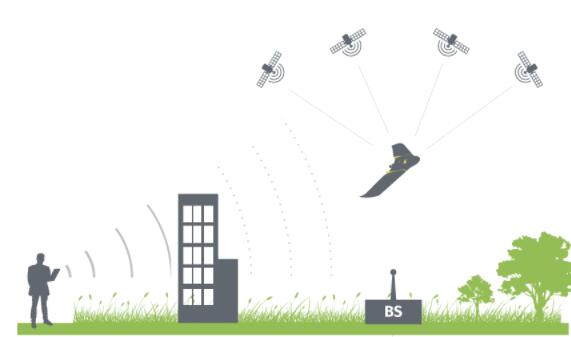Do RTK/PPK drones give you better results than GCPs? Leave a comment
What is the difference between a RTK (Real Time Kinematic) & PPK (Post Processed Kinematic) drone? And which gives you greater accuracy?
Accuracy is of vital importance for drone mapping and photogrammetry professionals. But with so many options out there, it’s not always clear which one is the best.
We’ve tested RTK vs non-RTK drones in different, real-world conditions to help you understand which is the best tool for you.
RTK vs non-RTK drones
Non-RTK drones – are they accurate?
When you fly a non-RTK drone with an onboard GPS receiver or a receiver along with the camera, camera positions are trilaterated from satellites so their positions are identified by several distance measurements.
Normally, you can expect an inaccuracy of up to several meters, especially in Z directions, depending on the equipment quality and the satellite geometry.
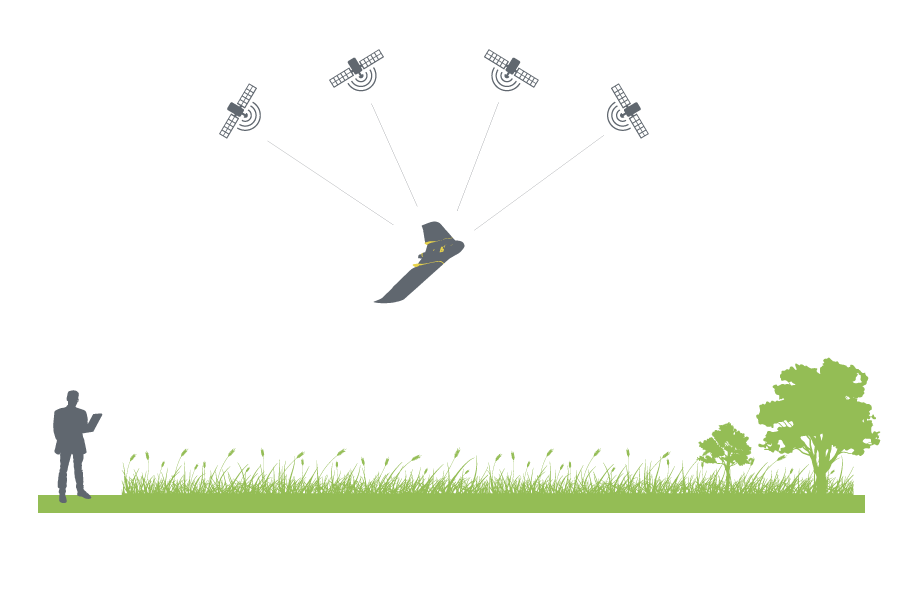
With a data-link connection, such as GSM or Wi-Fi, an RTK drone will connect to a base station or a virtual reference station (VRS) via the laptop which controls the flight. The camera positions are calculated in real-time, referring to ground references, the locations of which are accurately measured for a long period of time. The calculation helps correct the camera positions up to two to three centimetres of accuracy, both horizontal and vertical.
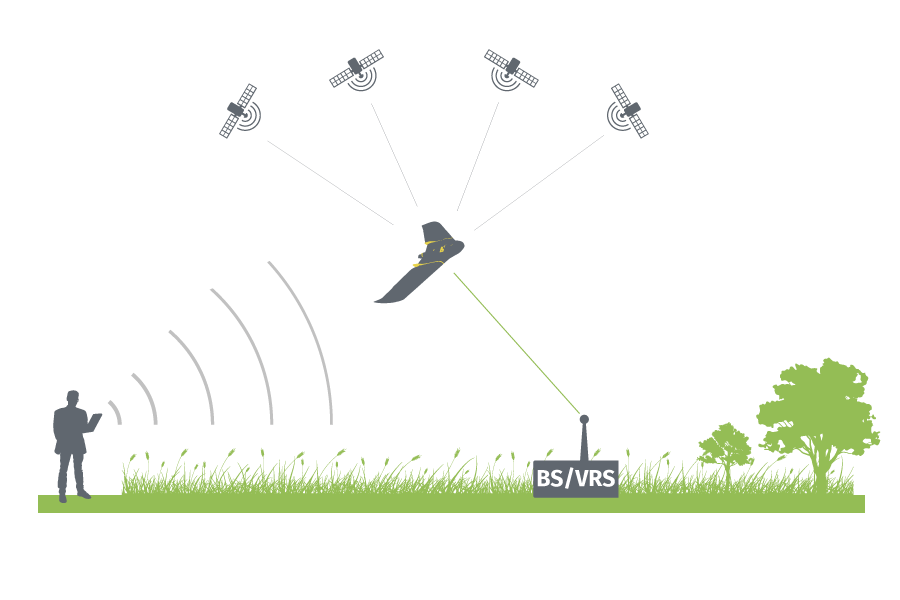
Base stations and virtual reference stations create an RTK correction signal which improves positioning.
However, things do not always work perfectly. People working on site may encounter interrupted connections which interfere the real-time corrections for camera positions. The system gives float solutions or even gets back to standalone mode. The camera positions are RTK-float, indicating a big uncertainty around the corrections. The accuracy will again be tens of centimetres for RTK-float, or even up to meters of accuracy as you would get from non-RTK flights. In this case, you can perform the computation referring the ground reference afterward with a PPK drone.
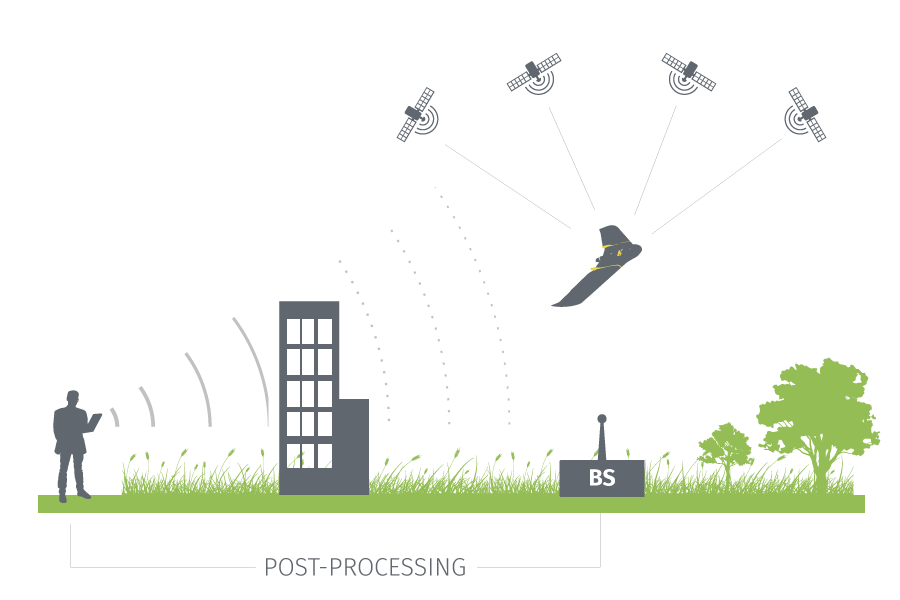
Link between drone and base station can be interrupted by buildings or other structures.
What about ground control points?
Which provides you a better accuracy? RTK, PPK, or GCPs?
There is an advantage of using RTK/PPK drones over non-RTK ones if you do not plan to apply any ground control points (GCPs) due to some on-site limitation or the painful measuring procedures.
However, an RTK/PPK drone needs to pair with specific hardware and software. The whole system needs to support the communication with base stations or VRS and includes post-processing features. It is also crucial to have a compatible image processing software, such as Pix4Dmapper, which takes into account different accuracies of individual camera position.
All these high-tech implementations make the RTK/PPK drones much more expensive than the others. Of course, you can add RTK/PPK to an existing drone, which is an increasingly popular choice. Here we provide quality comparisons between RTK/PPK flights with no GCP used and non-RTK flights with well-distributed GCPs. This article can serve as a prerequisite or a reference for those who are considering whether to buy a new drone or to stay with GCPs.
To better investigate the performance, we did two separate flights: one with RTK mode and the other with standalone mode (real-time corrections disabled or connection lost during flight) over two different types of regions: crop fields and urban areas.
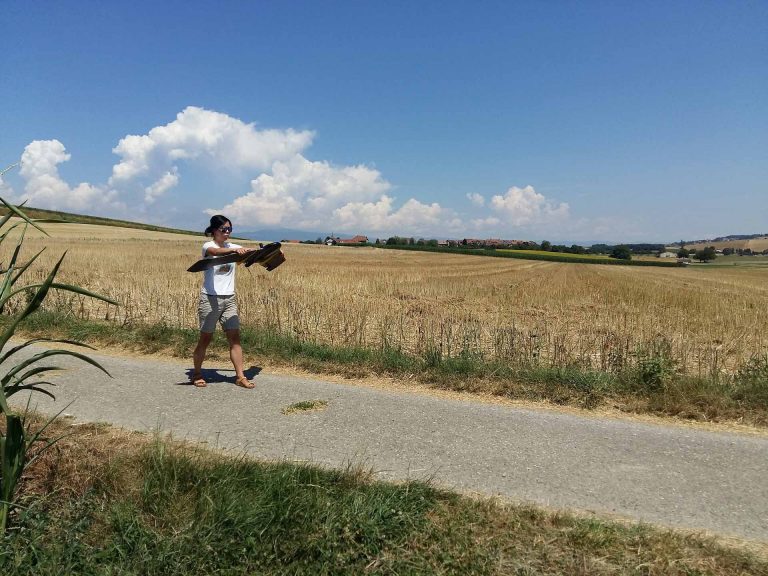
eBee Plus take-off in a field
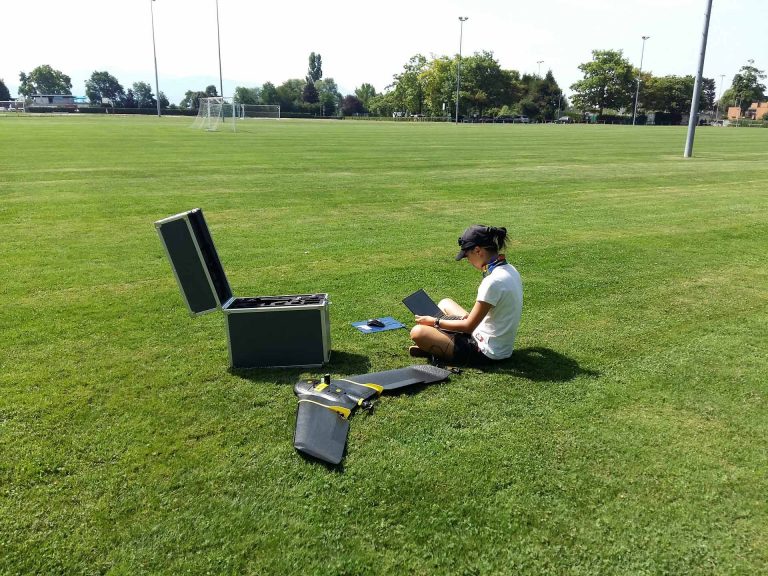
Flight planning with eMotion 3
Flights were performed with a senseFly eBee Plus and GCPs measured with Javad Triumph-ls. Both RTK flights and standalone flights of the same region followed the same configurations. We used GCPs to adjust the camera positions of standalone-mode flights, and the same set of check points to assess the accuracy of both modes.
All projects were processed with Pix4Dmapper, using the default 3D Map template.
The first test: field flight
Single grid, height = 102 m (GSD 2.5 cm), overlap 80%
While flying over a field, we can expect that the connection will not meet too many obstruction. Our RTK flight has 99% of the camera positions fixed so clearly, no post-processing (PPK) is needed.
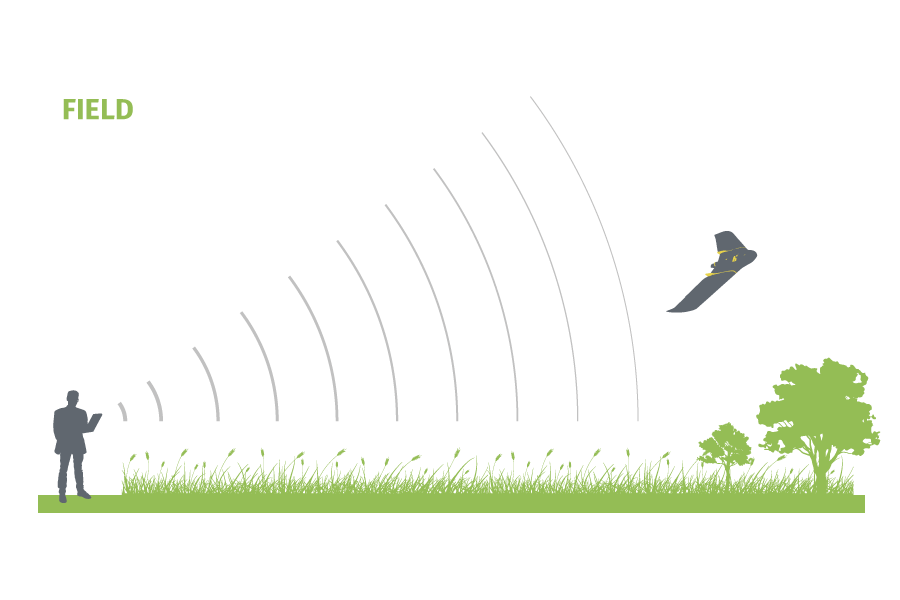
The ideal condition for drone flying is when it is sunny with a reasonable temperature and little to no wind.
Here we compare the accuracy from the RTK flight without using any GCPs and the standalone-mode flight with well-distributed GCPs. The result from RTK flight in the field is quite impressive.
It gives around one-pixel (2.5 cm) accuracy in all directions: X, Y, and Z. In standalone mode, we get 3.6 meters of vertical accuracy, which can be expected without applying position corrections or using any GCPs.
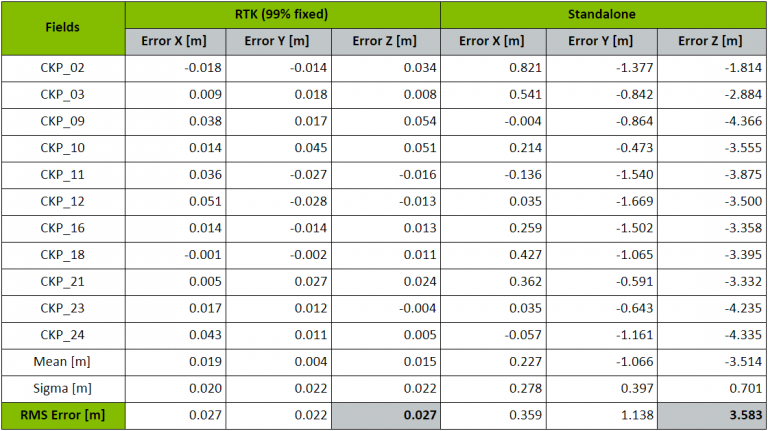
Accuracy assessment of an RTK flight and a non-RTK one, without using any GCPs
Once we applied a set of GCPs, the errors in Z greatly decreased. However, we also found that the distribution plays an extremely important role in this type of project. Here we also compare the accuracy when using GCPs in different allocation:
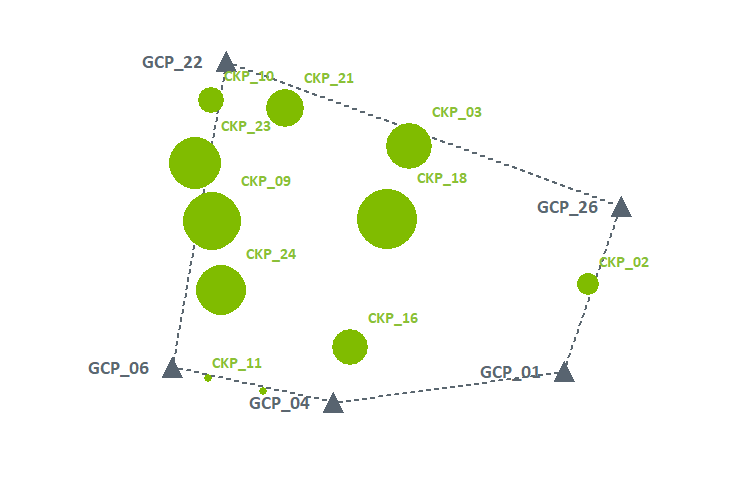
GCPs on the edges: large vertical errors around a tall corn field and far from GCPs
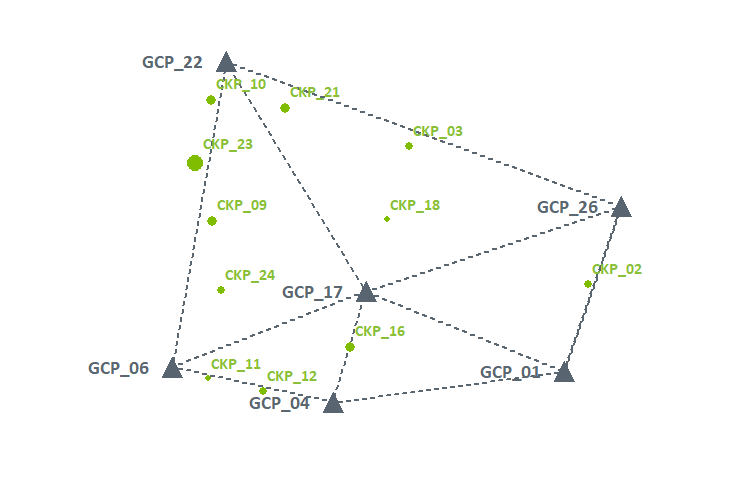
GCPs on the edges and one more in the middle of the field: vertical errors dramatically reduced
From the chart, we could see that by placing one more GCP in the middle of the field, the vertical accuracy improved from 65 cm to around 6.6 cm. The error accumulates when it gets further from the GCPs and when there is a difficult region around.
“A difficult region” here refers to cases that could be problematic for feature finding and image matching, and crop fields is one of them. Images taken from such regions generate more position errors which lead to lower accuracy. In this case, the precise camera positions (99% RTK-fixed at the first stage) functions as dense and well-distributed GCPs.
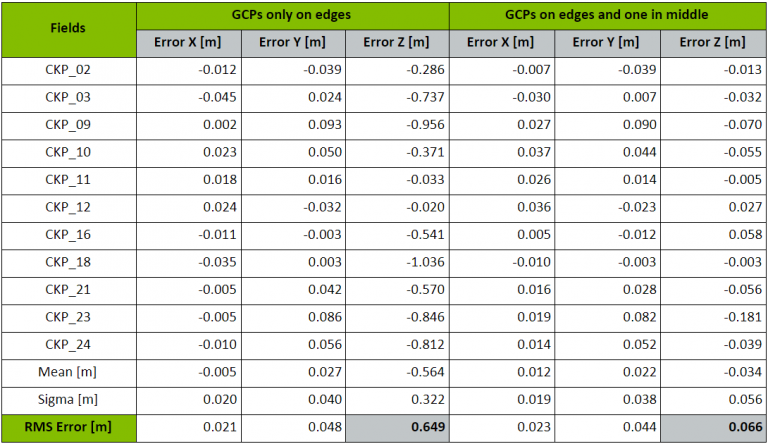
Accuracy assessment of processing with different GCP allocations
Urban flight
Double grid, height = 102 m (GSD 2.5 cm), overlap 80%
Flying a fixed-wing drone over an urban area can be more complicated. Apart from the permission issues, you need an open place for take-off and landing, which is not always feasible for urban regions.
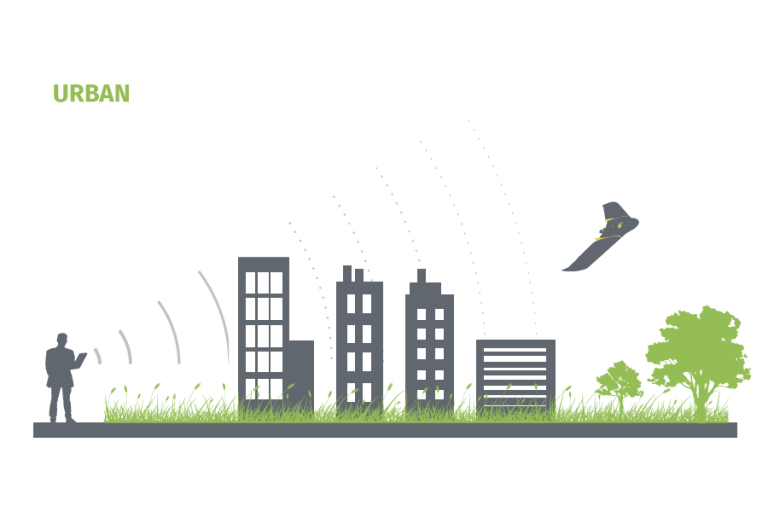
Drone flight operations need to be closely monitored within an urban area aviation environment
In this project, we found a spacious sports park close to the city center. The buildings, trees, and local Wi-Fi interfered the data-link connections during the flight. It turned out that only 71% of the camera positions were well-corrected (RTK-fixed).
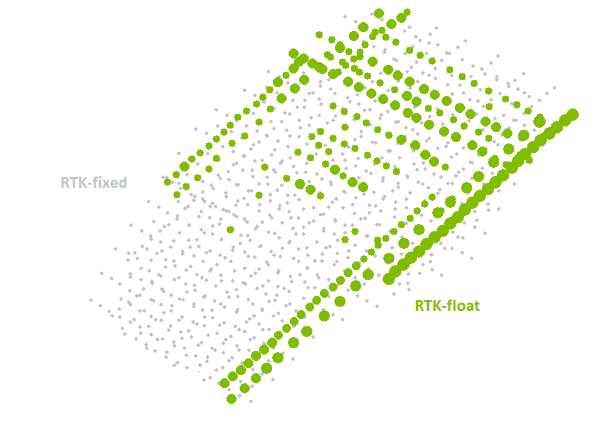
Acquired camera position: RTK-fixed displayed in gray and RTK-float in green, size referring to the values
In real situations, the uneven distribution of RTK-float (positions not well-corrected) caused a barrier to improving the global accuracy.
From the results, we noticed the disadvantage of the RTK flight when the connection was lost due to the obstructions. In such conditions, PPK improves the result. Although it is not guaranteed to be always better than using GCPs, they are quite close in our case.
In the RTK flight, we found larger errors closer to where the RTK-float camera positions were located, while in the post-processed results, the error looks more even throughout the entire region.
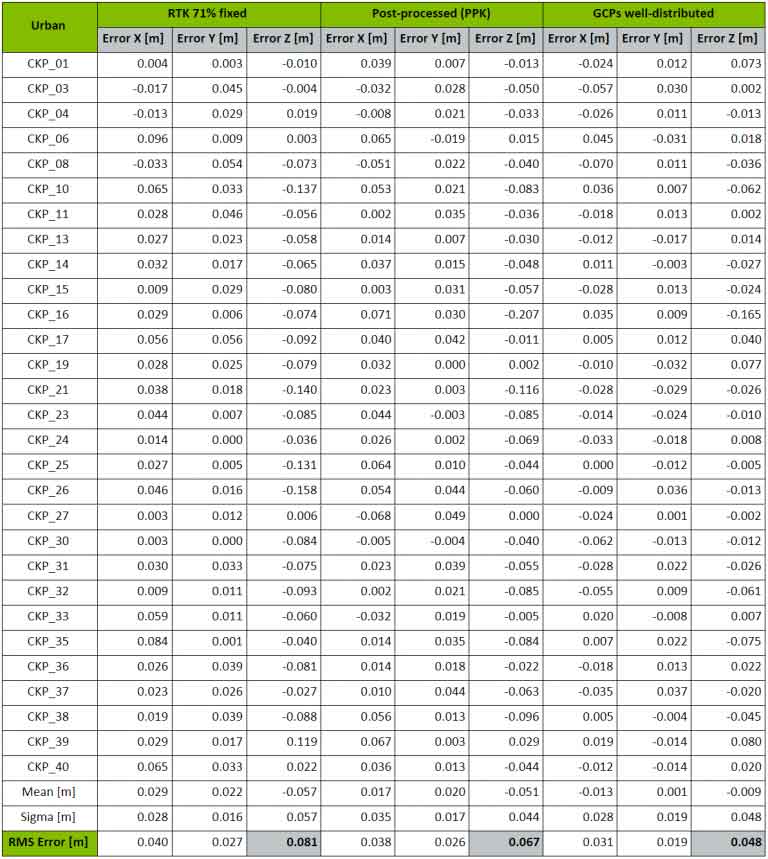
Accuracy assessment for the RTK flight (71% RTK-fixed), post-processed (PPK) result, and the project with GCPs
